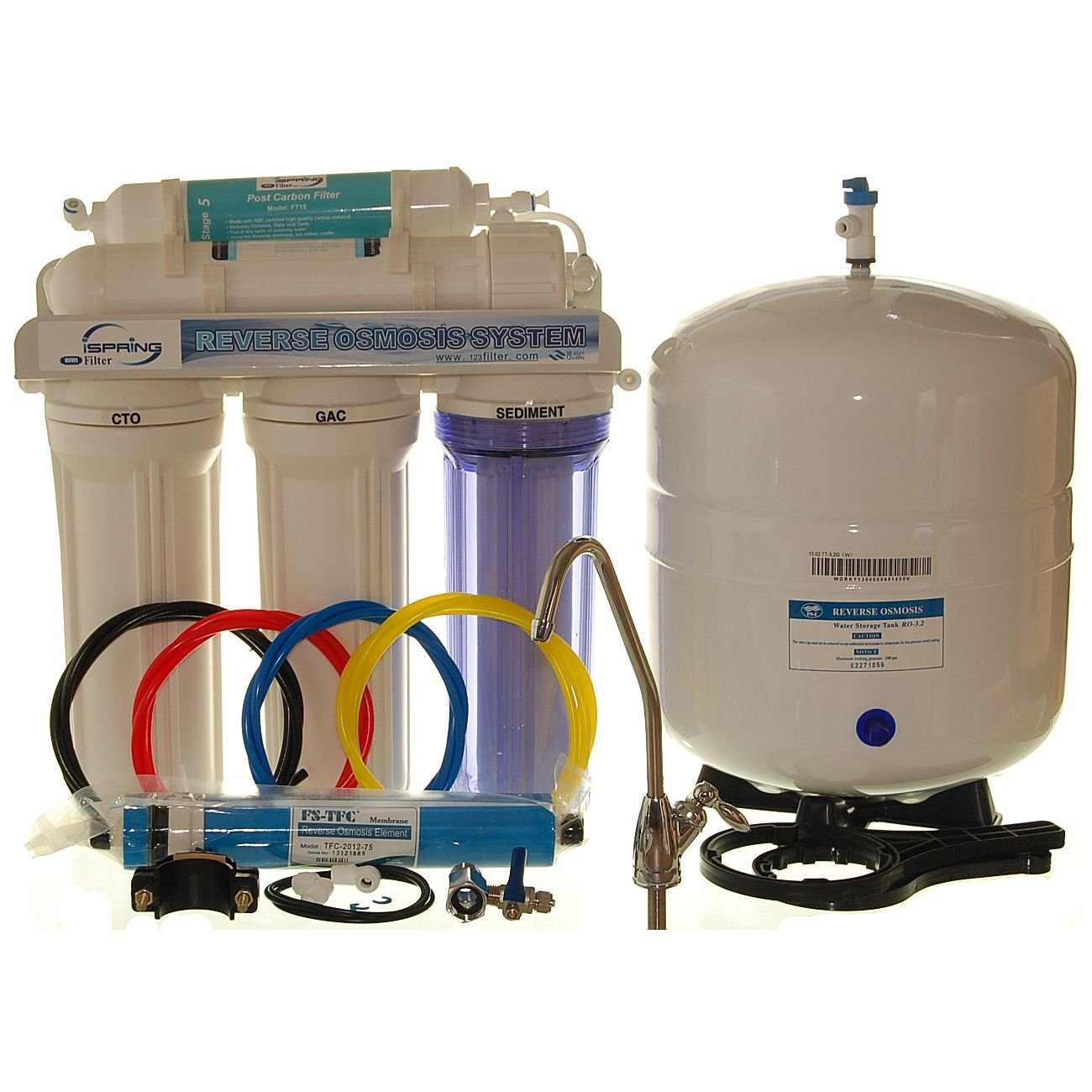Domestic Reverse Osmosis Filter Systems: An Introduction
 The Reverse Osmosis home system filters are becoming more and more popular and widespread, but I bet there are still some curious but doubting citizens that are not quite sure what it does and how it helps. To answer the questions of many, we have tackled the matters of: process definition and explanation, the overall benefits of acquiring such a system and naming the types of contaminants RO filters restrain.
The Reverse Osmosis home system filters are becoming more and more popular and widespread, but I bet there are still some curious but doubting citizens that are not quite sure what it does and how it helps. To answer the questions of many, we have tackled the matters of: process definition and explanation, the overall benefits of acquiring such a system and naming the types of contaminants RO filters restrain.
The apparatus may seem overly complicated to some, but it’s actually a relatively easy installable device and much cheaper way to get clean potable water than buying it bottled. The parts of it are essentially the same with all models available, so it only remains to search for a high quality manufacturer and Bob’s your uncle.
Definition
The procedure relies on pressure work that propels a liquid through a membrane. If we have hard water in mind, the process is equally forcing a destined solution via membrane letting soft water to reach the other side. The heavy minerals are thus captured and removed from your tap water.
In more detail
So, how does this system work in the house? The tap water is forced through a selectively penetrable membrane thickness of a plastic foil (approximately). The water passes while impure and mineral content is trapped. The purified water is safely saved in a tank for near future use. Once you tackle your faucet in the house water station, the pure water goes through an extra carbon filter prior to leaving the apparatus.
This undoubtedly amazing system will treat a variety of problems affecting the quality of your tap water. It efficiently does away with the contaminants, polluted water, odours and nasty tastes alike.
Common components
Here we have the basic parts of a domestic Reverse Osmosis filter structure that are responsible for multilevel purification procedure and ensure the best possible results:
- Cold water supply valve deals with unheated water line
- Pre-filter is initial extractor of residue such as dirt, sand and similar sediments
- Optional filter for chlorine removal
- RO membrane diligently handles numerous contaminants
- Post filter is carbon made and deals with potential bad smell and taste
- Automatic shut off valve preserves water when tank reaches highest capacity
- Check valve blocks the two-way flow that could mar the membrane
- Flow controller protects the membrane and enables a continual water flow
- Tank storage saves the clean water for later use
- Faucet is a part of your under-sink reverse osmosis filter system
- Drainage starts from the membrane to pick up on waste and impurities.
Key contaminants extracted
The incredible Reverse Osmosis membrane catches the particles sized over 0.001 micrometers. It successfully extracts sulphate, sodium, nitrate, mercury, cyanide, arsenic, lead and many other harmful substances.
The benefits of Reverse Osmosis system in one place
We’ve put together a selection of highlights when reverse osmosis system benefits are in question.
- It’s the leading and most efficient method of impurity removal for the tap water, capturing maximum of 98% dissolved matter
- The liquid provided is quality purified water, clear and safe
- Maintenance is quite easy with quick substitution of necessary filtering components
- It features a space-saving design with less tubes for more reliable operation
- Backflow prevention is secured with the existence of check valves
- You will get a two year membrane guarantee and around one year for cartridges
- Carbon filter it has will help you minimize any extra smell and taste presence
- Extraction of 99.99% of bacterial and viral cultures, as well as cysts is certified
- The system removes sugars as well, and that’s why they also exploit it for maple syrup production (water is thus removed from sap)
- The water RO system provides presents a superb economic and green alternative to bottled water.
No system on the market can vouchsafe for total (100%) eradication of unpleasant or harmful ingredients contained in water. However, RO filters are by far the most effective solution.
Exclusively Written For Homes Re-Imagined, LLC By Lillian Connors